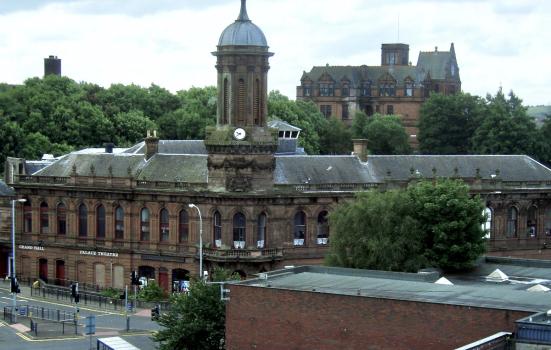More than half the funded projects are in areas identified by the Department for Levelling Up, Housing and Communities as a priority for levelling-up investment.

Gordon's Gallery
A total of £594m is being invested in restoring and developing local heritage and culture sites across the United Kingdom as part of the second round of the government’s Levelling Up Fund.
The latest funding, announced today, will deliver a total of £2.1bn to 111 areas, and follows a first round from 2021, which designated £1.7bn, including £429m to culture and heritage.
Almost all successful bids in the latest round are led by unitary authorities, London borough councils or district councils.
READ MORE:
Analysis by Arts Professional found that 60 of the total funded projects are in areas that were identified by the Department for Levelling Up, Housing and Communities (DLUHC) as the highest priority for levelling-up support during the application process.
Among these areas is Harlow, with the district council receiving almost £20m for the development of The Harlow Arts and Cultural Quarter.
The quarter will see the creation of a new music and arts venue by combining the Playhouse Theatre, Gibberd Gallery and local library to house a new music school and space for the creative industries, featuring studios, rehearsal spaces, galleries and event spaces.
Deputy Leader of Harlow District Council Dan Swords said the investment is “another historic moment for the regeneration of the town centre”.
“Not only will this Levelling Up funding regenerate another part of the town centre, but it will also support leisure, art and culture and boost the local economy.”
Funding for theatres
Theatres Trust Director Jon Morgan said the trust is delighted to see a number of theatre projects set to benefit from the second round of the LUF.
The Hexagon Theatre will benefit from part of a £19.1m package given to Reading Borough Council, which will also see the building of a new library.
In Scotland, East Ayrshire Council will put part of its £20m towards refurbishing its 163-year old Palace Theatre and Grand Hall, while in Wales, Bridgend County Borough Council received £18m to transform the Grand Pavilion in Porthcawl.
Spilsby’s Session House, which is including in the Theatres Trust’s theatres at risk list, is one of three historic sites sharing £8m delivered to East Lindsey District Council in Lincolnshire.
“We know from our work with theatres in towns and villages across the country that they provide important social and cultural spaces for communities, and there is huge value in investing in the performing arts and in cultural infrastructure, which can kickstart the revival of town centres and help reignite local pride,” Morgan said.
“We are pleased to see that this is being recognised at a government level.”
New cultural offers
While most successful heritage bids focus on restoring or redeveloping existing assets, some have also received funding for new cultural sites.
London Borough of Lewisham received more than £19m, part of which will create a flagship culture and business hub, following on from the South London area’s stint as London Borough of Culture last year.
Malvern Hills, a DLUHC priority area for investment, is set to develop an outdoor theatre and new studio spaces thanks to a £19.9m grant to Malvern Hills District Council. The council hopes the space will improve opportunities for local young people and attract 135,000 visitors.
Derby City Council secured £20m to put towards a new ‘Learning Theatre’ developed on the city’s historic Assembly Rooms site, hosting shows and offering students a place to work and perform.
The council has estimated the new venue will increase theatre attendance by 83,000 and attract an additional 25,000 visitors to Derby each year, generating an additional £1.7m per year for the local economy.
“We are delighted that the government see Derby as a place to invest in and culture as the driving force for regeneration,” said Derby Theatre CEO and Artistic Director Sarah Brigham and Derby Theatre Board Chair Professor Kathryn Mitchell.
“We look forward to working with Derby City Council in ensuring that the LUF funds will contribute to a vibrant future for our theatre and our city.”




